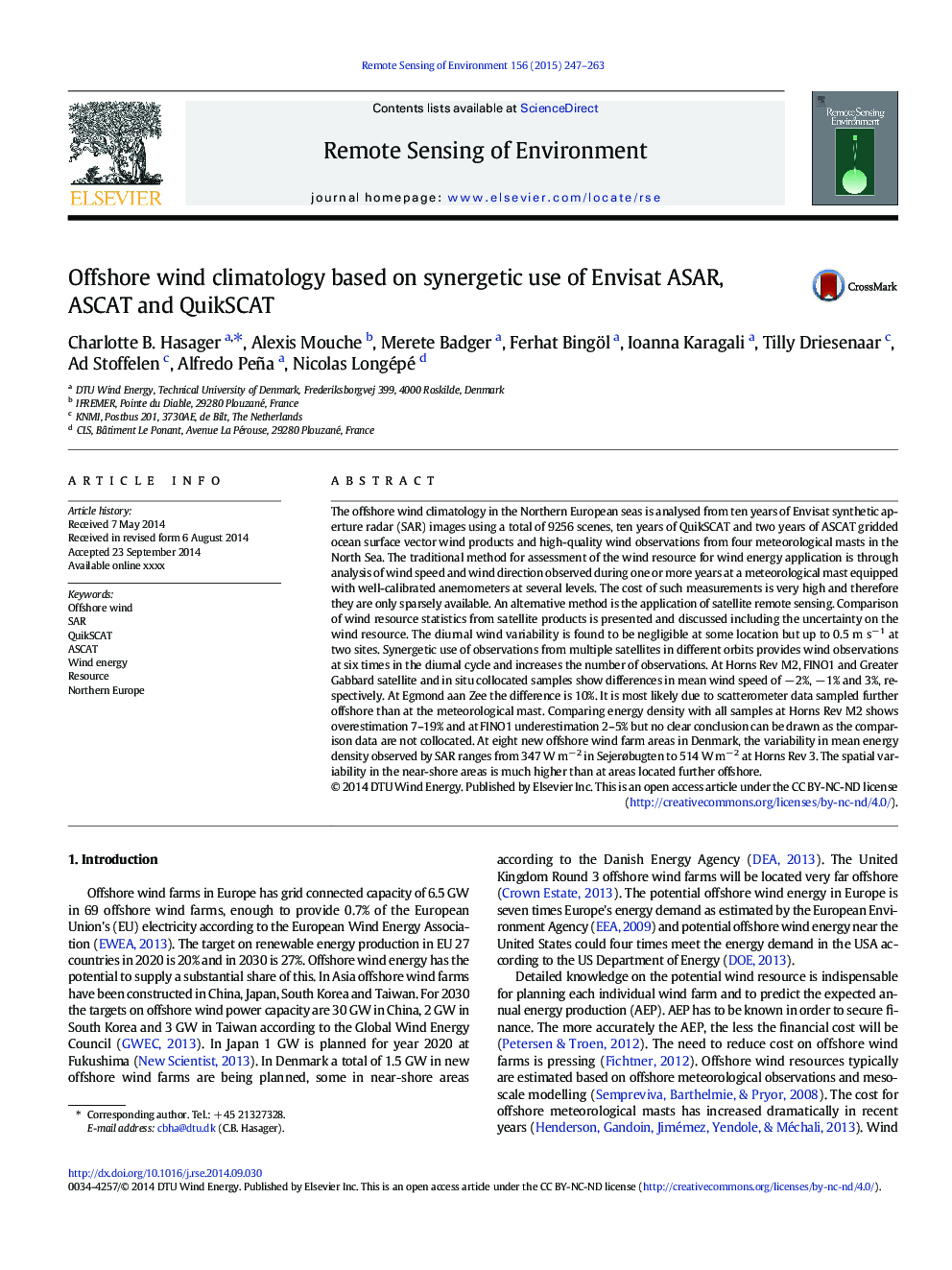| کد مقاله | کد نشریه | سال انتشار | مقاله انگلیسی | نسخه تمام متن |
|---|---|---|---|---|
| 6346526 | 1621244 | 2015 | 17 صفحه PDF | دانلود رایگان |
عنوان انگلیسی مقاله ISI
Offshore wind climatology based on synergetic use of Envisat ASAR, ASCAT and QuikSCAT
دانلود مقاله + سفارش ترجمه
دانلود مقاله ISI انگلیسی
رایگان برای ایرانیان
کلمات کلیدی
موضوعات مرتبط
مهندسی و علوم پایه
علوم زمین و سیارات
کامپیوتر در علوم زمین
پیش نمایش صفحه اول مقاله

چکیده انگلیسی
The offshore wind climatology in the Northern European seas is analysed from ten years of Envisat synthetic aperture radar (SAR) images using a total of 9256 scenes, ten years of QuikSCAT and two years of ASCAT gridded ocean surface vector wind products and high-quality wind observations from four meteorological masts in the North Sea. The traditional method for assessment of the wind resource for wind energy application is through analysis of wind speed and wind direction observed during one or more years at a meteorological mast equipped with well-calibrated anemometers at several levels. The cost of such measurements is very high and therefore they are only sparsely available. An alternative method is the application of satellite remote sensing. Comparison of wind resource statistics from satellite products is presented and discussed including the uncertainty on the wind resource. The diurnal wind variability is found to be negligible at some location but up to 0.5 m sâ 1 at two sites. Synergetic use of observations from multiple satellites in different orbits provides wind observations at six times in the diurnal cycle and increases the number of observations. At Horns Rev M2, FINO1 and Greater Gabbard satellite and in situ collocated samples show differences in mean wind speed of â 2%, â 1% and 3%, respectively. At Egmond aan Zee the difference is 10%. It is most likely due to scatterometer data sampled further offshore than at the meteorological mast. Comparing energy density with all samples at Horns Rev M2 shows overestimation 7-19% and at FINO1 underestimation 2-5% but no clear conclusion can be drawn as the comparison data are not collocated. At eight new offshore wind farm areas in Denmark, the variability in mean energy density observed by SAR ranges from 347 W mâ 2 in Sejerøbugten to 514 W mâ 2 at Horns Rev 3. The spatial variability in the near-shore areas is much higher than at areas located further offshore.
ناشر
Database: Elsevier - ScienceDirect (ساینس دایرکت)
Journal: Remote Sensing of Environment - Volume 156, January 2015, Pages 247-263
Journal: Remote Sensing of Environment - Volume 156, January 2015, Pages 247-263
نویسندگان
Charlotte B. Hasager, Alexis Mouche, Merete Badger, Ferhat Bingöl, Ioanna Karagali, Tilly Driesenaar, Ad Stoffelen, Alfredo Peña, Nicolas Longépé,